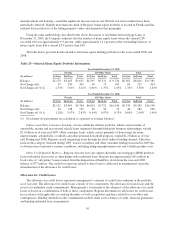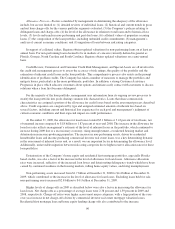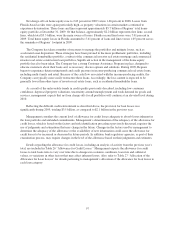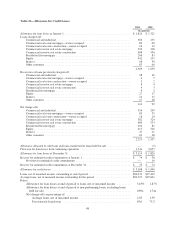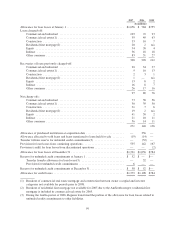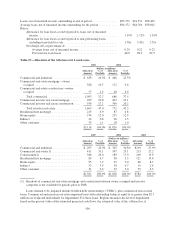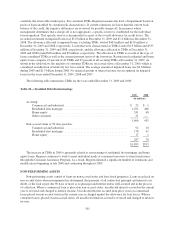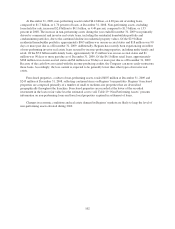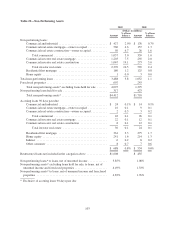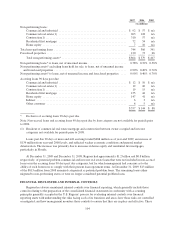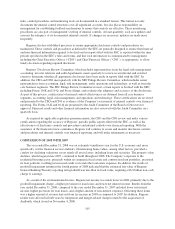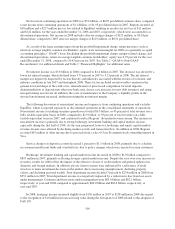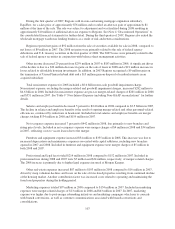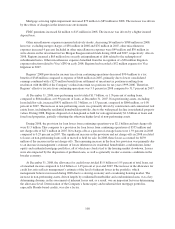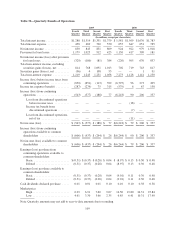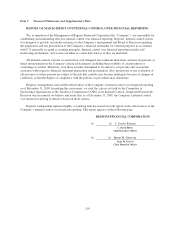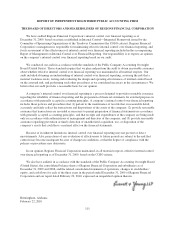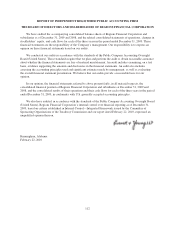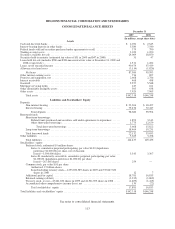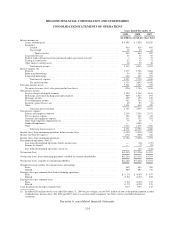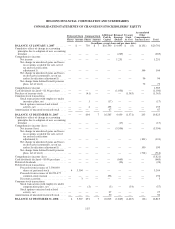Regions Bank 2009 Annual Report Download - page 119
Download and view the complete annual report
Please find page 119 of the 2009 Regions Bank annual report below. You can navigate through the pages in the report by either clicking on the pages listed below, or by using the keyword search tool below to find specific information within the annual report.risks, control procedures and monitoring tools are documented in a standard format. This format not only
documents the internal control structures over all significant accounts, but also places responsibility on
management for establishing feedback mechanisms to ensure that controls are effective. These monitoring
procedures are also part of management’s testing of internal controls. At least quarterly, each area updates and
assesses the adequacy of its documented internal controls. If changes are necessary, updates are made more
frequently.
Regions also has established processes to ensure appropriate disclosure controls and procedures are
maintained. These controls and procedures as defined by the SEC are generally designed to ensure that financial
and non-financial information required to be disclosed in reports filed with the SEC is reported within the time
periods specified in the SEC’s rules and forms, and that such information is communicated to management,
including the Chief Executive Officer (“CEO”) and Chief Financial Officer (“CFO”), as appropriate, to allow
timely decisions regarding required disclosure.
Regions’ Disclosure Review Committee, which includes representatives from the legal, risk management,
accounting, investor relations and audit departments, meets quarterly to review recent internal and external
events to determine whether all appropriate disclosures have been made in reports filed with the SEC. In
addition, the CEO and CFO meet quarterly with the SEC Filings Review Committee, which includes senior
representatives from accounting, legal, risk management, audit, operations and technology, as well as from the
core business segments. The SEC Filings Review Committee reviews certain reports to be filed with the SEC,
including Forms 10-K and 10-Q, and Proxy filings, and evaluates the adequacy and accuracy of the disclosures.
As part of this process, certifications of internal control effectiveness are obtained from all core business
segments, accounting, legal, risk management, and operations and technology. These certifications are reviewed
and presented to the CEO and CFO as evidence of the Company’s assessment of internal controls over financial
reporting. The Forms 10-K and 10-Q are presented to the Audit Committee of the Board of Directors for
approval. Financial results and other financial information are also reviewed with the Audit Committee on a
quarterly basis.
As required by applicable regulatory pronouncements, the CEO and the CFO review and make various
certifications regarding the accuracy of Regions’ periodic public reports filed with the SEC, as well as the
effectiveness of disclosure controls and procedures and internal controls over financial reporting. With the
assistance of the financial review committees, Regions will continue to assess and monitor disclosure controls
and procedures and internal controls over financial reporting, and will make refinements as necessary.
COMPARISON OF 2008 WITH 2007
The year ended December 31, 2008 was an extremely tumultuous year for the U.S. economy and, more
specifically, for the financial services industry. Deteriorating home values, among other factors, provided a
catalyst for declining valuations across nearly all asset classes, including loans and securities. The property value
declines, which began in late 2007, continued to build throughout 2008. The Company’s exposure to the
residential housing sector, primarily within its commercial real estate and construction loan portfolios, pressured
its loan portfolio, resulting in increased credit costs and other real estate expenses. In addition, the results of
goodwill impairment testing in the fourth quarter of 2008 indicated that the estimated fair value of Regions’
General Banking/Treasury reporting unit goodwill was less than its book value, requiring a $6.0 billion non-cash
charge to earnings.
As a result of the aforementioned factors, Regions net income was much lower in 2008, primarily due to the
goodwill impairment charge, a higher provision for loan losses and lower net interest income. Results from the
year ended December 31, 2008, compared to the year ended December 31, 2007 included lower net interest
income, higher provision for loan losses, and a higher amount of non-interest expenses. Offsetting these items
was a higher amount of revenue derived from fee income in 2008 as compared to 2007. In addition, Regions
results were affected in both years by integration and merger-related charges related to the acquisition of
AmSouth, which closed on November 4, 2006.
105


